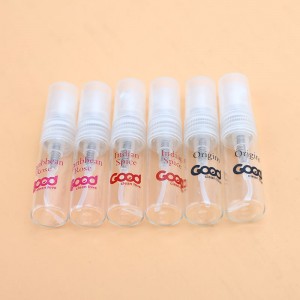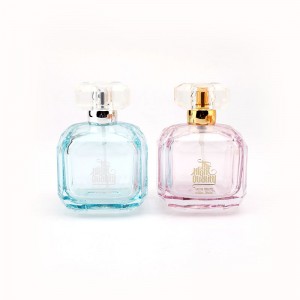Introduction:
Perfume bottles are not only functional containers for storing and dispensing fragrances but also serve as exquisite pieces of art that reflect the essence of the perfume they hold. The process of perfume bottle manufacturing involves careful craftsmanship and attention to detail. This article delves into the intricate world of creating these elegant vessels, exploring the materials used, the production techniques employed, and the significance of design in the perfume industry.
1. Materials used in perfume bottle manufacturing:
- Glass: Glass is the most commonly used material for perfume bottles due to its transparency, versatility, and ability to preserve fragrance. It allows the consumer to see the color and level of the perfume inside.
- Crystal: Crystal bottles, often made of lead crystal, are renowned for their brilliance, clarity, and luxurious feel. Crystal adds a touch of elegance and sophistication to perfume packaging.
- Ceramic: Ceramic bottles offer a unique alternative to glass and crystal. They can be molded into various shapes, colors, and patterns, providing a wide range of design possibilities.
- Metal: Metal accents, such as caps, collars, and decorative elements, are often incorporated into perfume bottle designs. Metals like gold, silver, and brass add a luxurious touch and enhance the overall aesthetic appeal.
2. Production techniques:
- Blowing: Glass perfume bottles are often created using the blowing technique. Molten glass is blown into a mold, allowing it to take the desired shape. This method offers flexibility in design and enables the production of intricate details.
- Pressing: Pressing involves pressing or stamping molten glass or crystal into a mold. This technique is commonly used for mass production as it allows for faster production rates.
- Handcrafting: Many high-end perfume bottles are meticulously handcrafted by skilled artisans. This labor-intensive process involves shaping the glass or crystal by hand, resulting in unique and exquisite designs.
3. Design significance in the perfume industry:
- Brand identity: Perfume bottles play a vital role in establishing a brand’s identity. Unique and recognizable bottle designs can help create a strong brand image and distinguish a perfume from its competitors.
- Visual appeal: The visual appeal of a perfume bottle is crucial in attracting consumers. A well-designed bottle can evoke emotions, capture attention, and entice customers to explore the fragrance within.
- Collectible value: Certain perfume bottles have become highly sought-after collectibles, appreciated for their historical significance, rarity, or unique design. Collectors value these bottles not only for their contents but also as valuable pieces of art.
Conclusion:
Perfume bottle manufacturing is a fascinating blend of artistry, craftsmanship, and innovation. Through the careful selection of materials, employment of various production techniques, and emphasis on design, perfume bottles become more than mere vessels. They become iconic symbols of the fragrances they hold, capturing the essence of luxury, elegance, and individuality.
Post time: Jul-04-2023

